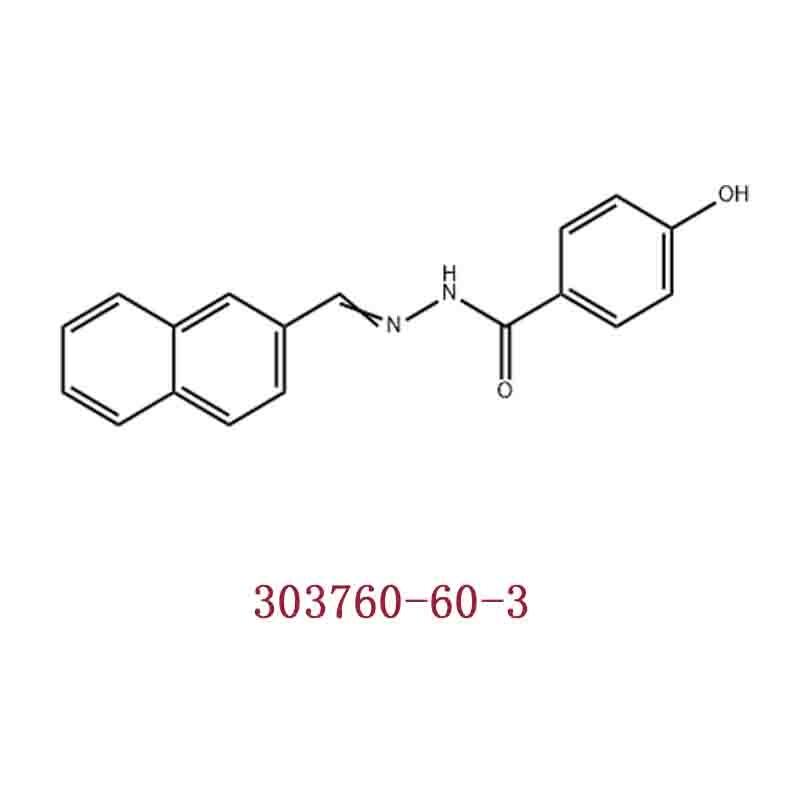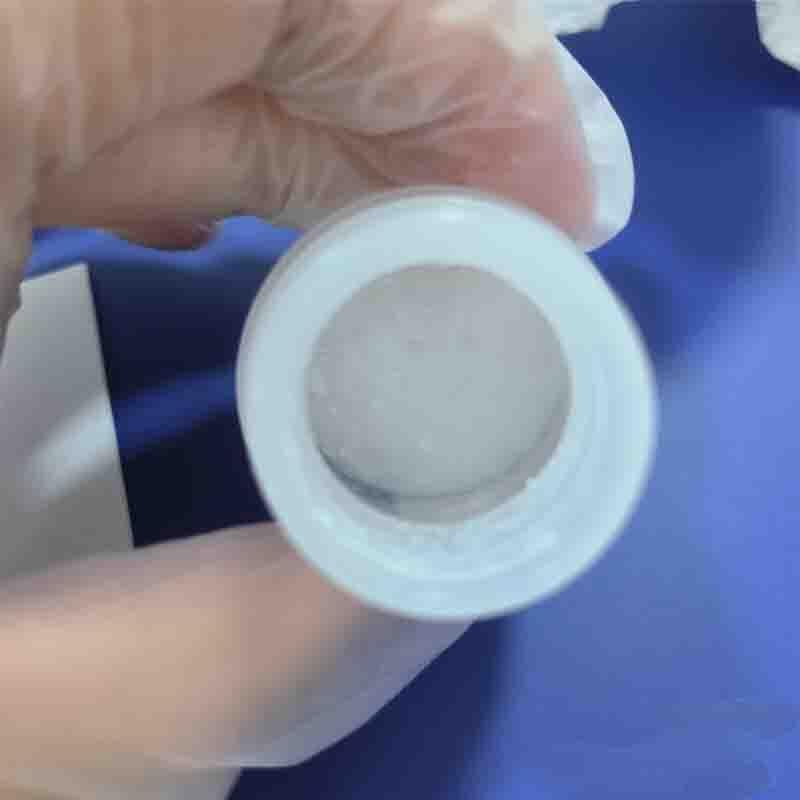-
Categories
-
Pharmaceutical Intermediates
-
Active Pharmaceutical Ingredients
-
Food Additives
- Industrial Coatings
- Agrochemicals
- Dyes and Pigments
- Surfactant
- Flavors and Fragrances
- Chemical Reagents
- Catalyst and Auxiliary
- Natural Products
- Inorganic Chemistry
-
Organic Chemistry
-
Biochemical Engineering
- Analytical Chemistry
-
Cosmetic Ingredient
- Water Treatment Chemical
-
Pharmaceutical Intermediates
Promotion
ECHEMI Mall
Wholesale
Weekly Price
Exhibition
News
-
Trade Service
Multiple endocrine tumor syndrome (MEN) is a group of clinical syndromes in which patients have two or more endocrine gland tumors or hyperplasia at the same time or in succession as the main characteristicTumors can be diverse, the onset time is different, and some of the affected glands are clinically static,diagnosisnot easyMEN is a group of syndromes that cause 2 or more endocrine gland tumors or hyperplhese due to autosomal dominant genetic disordersThe following types are divided into the case of autosomal dominant gene mutationsMEN-1, known as Wermer syndrome, has a age of majority of about 1/10000 and is a familial and aggregated distributionThe most commonly affected endocrine glands are parathyroid glands (90% to 95%), pancreas (30% to 80%), and pre-pituitary lobes (20%-40%)primary parathyroidism is the most common and early manifestation of MEN-1, with abnormal increases in high blood calcium, low blood phosphorus and parathyroid hormonesImaging can detect parathyroid adenoma or hyperplasia, about 20% of patients have a septum parathyroid glandSecondly, the common tumors of MEN-1 are pancreatic neuroendocrine tumors (NETs), most of which are functional tumors that secrete hormones (e.ggastric progenitor, insulin, pancreatic hyperglycemia, etc.), causing corresponding clinical symptomsMEN-2: THE INCIDENCE OF MEN-2 is lower than men-1Characterized by thyroid myelin cancer and adrenal cytomoblastomaMEN-2 types are divided into three subtypes according to different clinical characteristics: MEN-2A (55% of MEN-2, also known as Sipple syndrome), MEN-2B (5% to 10%, also known as MEN-3) and familial thyroid myelin cancer (35%-60%)MEN-4 type: MEN-4 type is a new type of MEN defined in recent years, caused by the CDKN1B mutation, mainly affecting the parathyroid (81%) and the pituitary prefrontal lobe (42%) Common MEN tumors include parathyroid adenomas, pancreatic NETs, and pituitary adenomas, which are relatively easy to diagnose accurately Note the imaging of MEN-2B thyroid myelin cancer and rectal neuroendocrine tumors Thyroid myelin cancer is characterized by single/multiple low-density nodules, unclear boundaries, uneven density, uneven reinforcement of enhanced scanning is accompanied by internal irregular low density areas, which is different from the characteristics of thyroid papilloma cancer prone to cystic change and the apparent reinforcement of the sac wall nipple-like nodules Rectal neuroendocrine tumors showed uniform and significant reinforcement of lumps the imaging performance of a single endocrine gland tumor usually has typical characteristics, for MEN diagnosis focus on comprehensive diagnosis, pay attention to the relationship between a variety of endocrine gland lesions, form an image association, achieve correct diagnosis and typed, avoid missed diagnosis several experiences: (1) MEN diagnosis needs to do targeted multi-site multi-image examination; (2) focus on the glands that MEN often suffer, namely the parathyroid gland, pituitary gland, pancreas and thyroid gland, while paying attention to other endocrine glands within the scope of the scan, such as chest scans, the thyroid, parathyroid and thymus, abdominal scans to the pancreas, adrenal glands and gastroenterite trilateral region
s; It was found that the bone density of the spine was generally reduced, and it is recommended that the parathyroid ECT examination exclude seispsy of parathyroid gland function patients, 24 years old, type 1 Dynamic reinforcement of early pituitary front altheretoidal leaves left a low-enhanced nodule; 99mTc-MIBI SPECT /CT fault fusion imaging, parathyroid delay imaging show abnormal concentration of radionuclides in the left side of the parathyroid region; The lower abdominal wall skin is prone to dense small knots (pathologicaldiagnosis is a skin soft fibroid); oblique coronary recombinant enhancement scan arterial phase pancreatic head, pancreatic tail each saw a significant reinforced nodule; the coronary abdominal scan range of chest lumbar vertebral bone density reduction female, 52 years old, type 2A Ct flat sweep peritoneal after a kind of round slightly low density lump, density is uneven The right adrenal region saw high-density matching nail shadow; uneven and mild reinforcement of the lump after the abdominal membrane of the arterial period (pathologically diagnosed as chrome-ophmoblastoma); 99mTc-MIBI SPECT/CT tomography imaging, parathyroid delay imaging showed abnormal lywanty concentration of hyperradionucyls below the left thyroid gland, pathologically diagnosed as thyroid myelin cancer, and reduced vertebral density in the chest lumbarcell cell bone within the range of coronary abdominal scans patients, 22 years old, type 2B peripheral density soft tissue lumps, arterial period lumps significantly strengthened, T1WI show peripheral and other signalsoft tissue lumps, obviously strengthened, pathological diagnosis as neuroendocrine tumors; patient male, 36 years old, type 4 99mTc-MIBI SPECT/CT tomography, parathyroid delay imaging showed abnormal concentration of radionuclides in the right side of the parathyroid region, pathological diagnosis of parathyroid adenoma; differential diagnosis: (1) multiple neuroendocrine tumors Refers to the presence of two or more neuroendocrine tumors in the or digestive glands (e.g pancreas) in , but does not affect other endocrine glands such as the pituitary, thyroid and parathyroid glands (2) metastasis Pancreatic neuroendocrine tumors are prone to metastasis, but rarely to the adrenal glands, so attention should be paid to MEN when both pancreatic neuroendocrine tumors and adrenal nodules (such as elegomegalioma or adenomas with typical imaging) occur Also need to pay attention to other endocrine glands whether there is lesions, more certain to exclude metastatic tumors (3) neuroskin syndrome It is an autosomal dominant genetic disease that occurs simultaneously with nerves and skin, and can also cause multiple organic abnormalities at the same time, such as von Hippel-Lindau syndrome (VHL) The performance of the central nervous system vascular oblast tumor, about 17% with single or multiple pancreatic endocrine tumors, about 20% with cytomaphoma, but also kidney cancer, kidney and pancreatic cysts, and so on, while the thyroid and parathyroid glands are not affected (4) randomly combined lesions MEN-1 type can appear both adrenal adenoma and meningioma, but in clinical work encountered at the same time the occurrence of both diseases are not uncommon, can not all doubt MEN, must grasp its characteristic endocrine glands, to avoid misdiagnosis Source: Panda Radio







